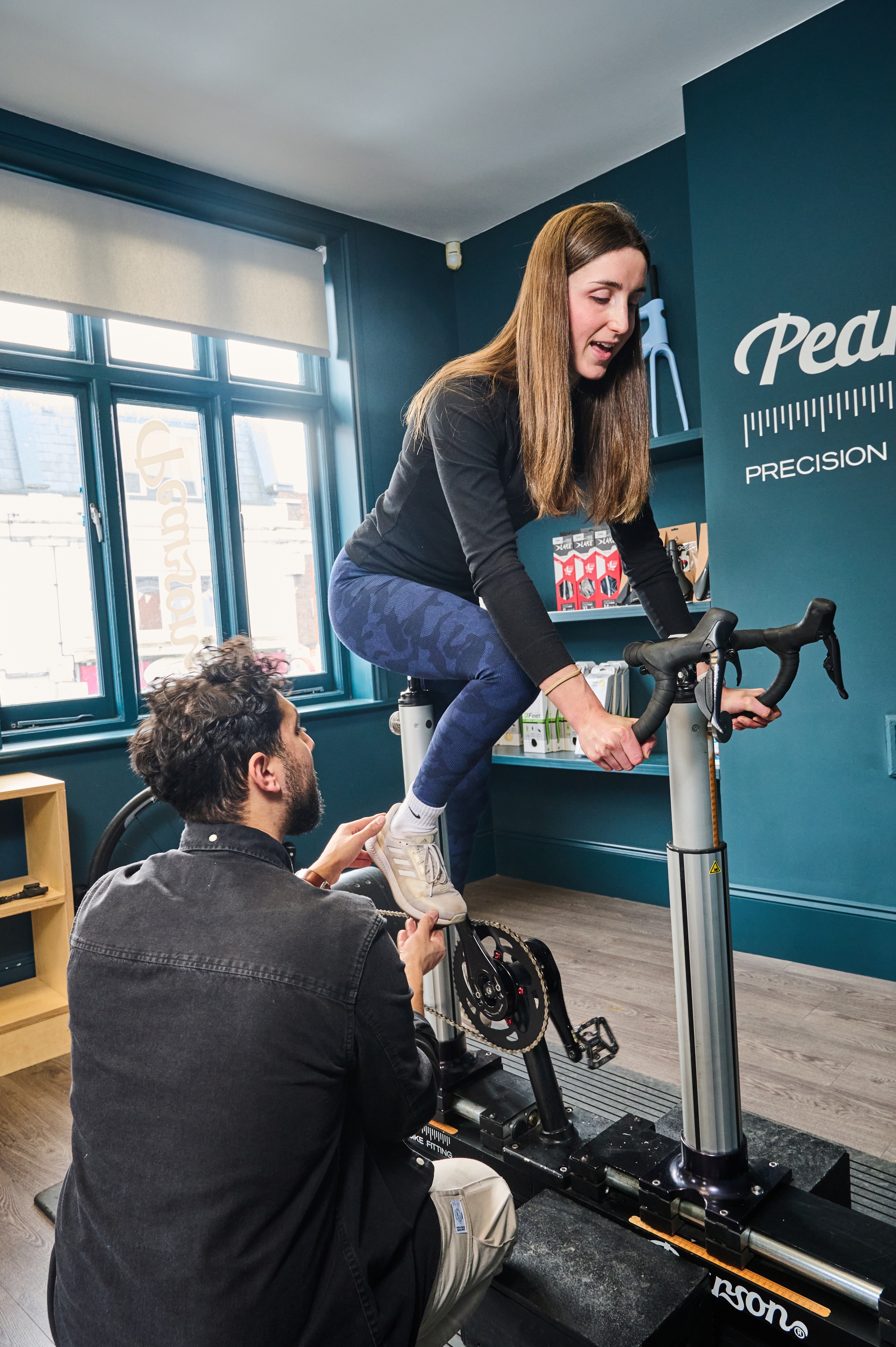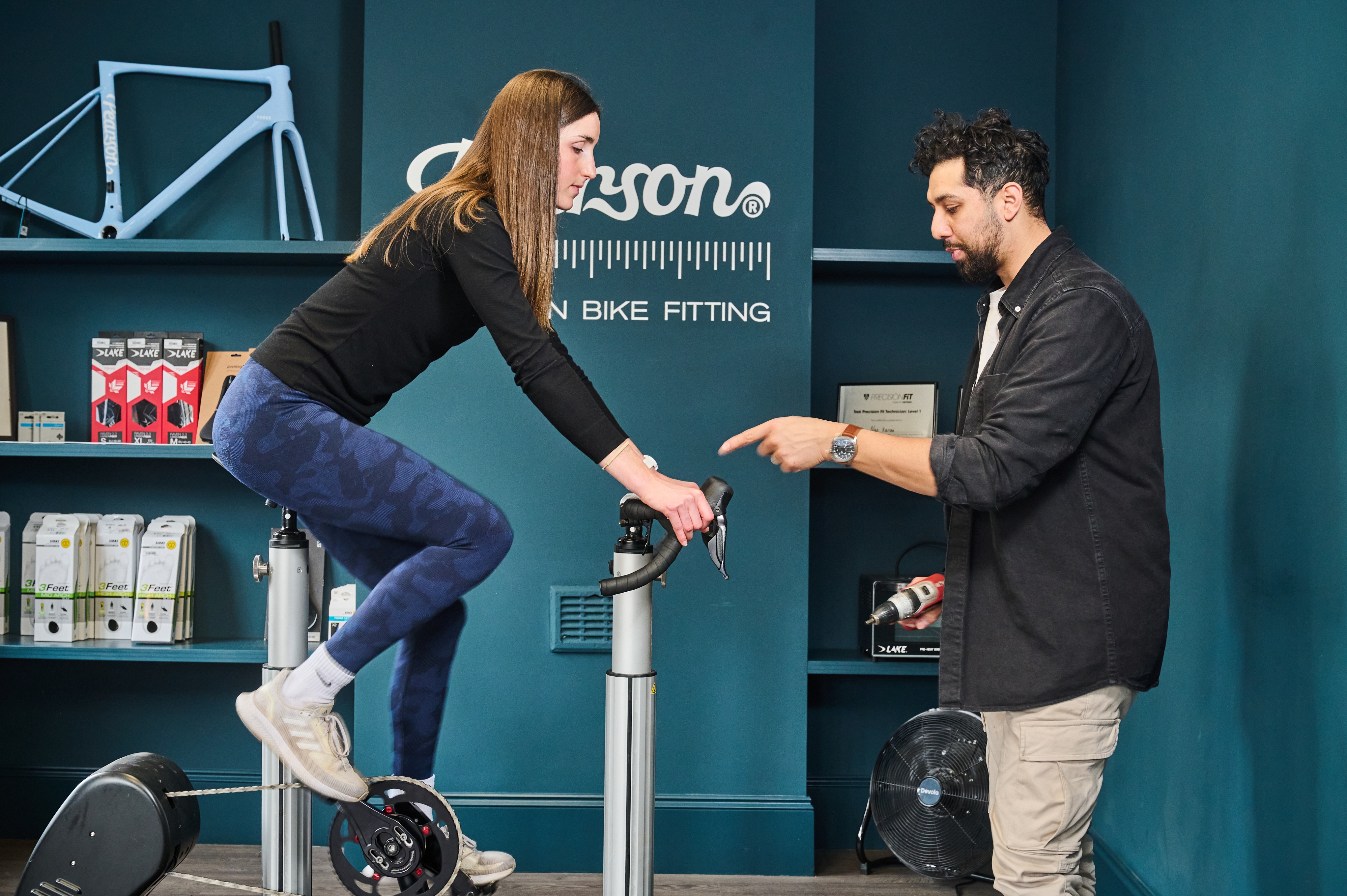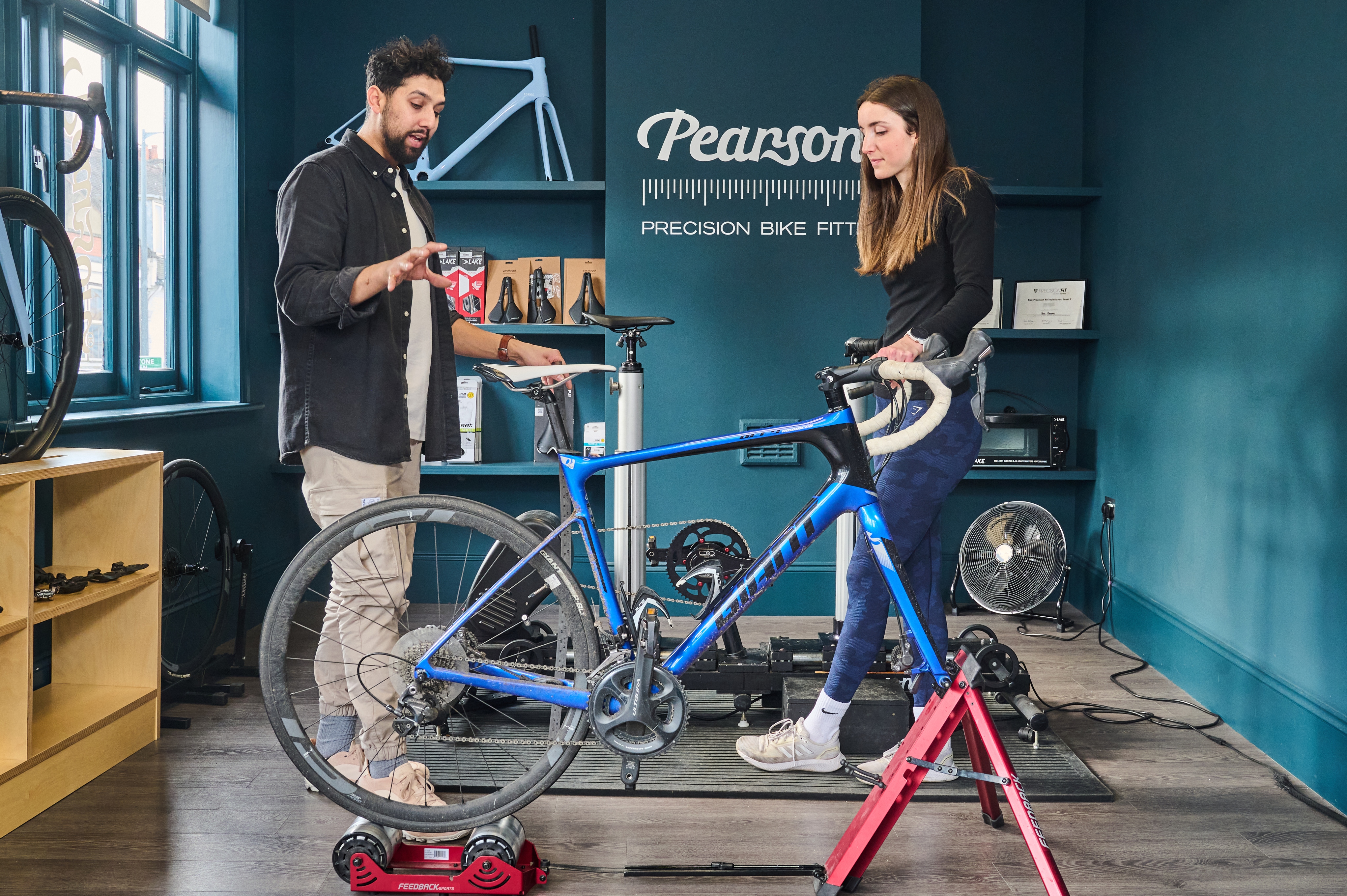
I’m an amateur rider who’s been cycling for a few years. Until recently, it never occurred to me that I might need a bike fit. I'm riding a secondhand Giant, and still considering taking the plunge with a pair of clipless pedals and dedicated cycling shoes. The idea of being properly fitted for a bike seemed like a service reserved specifically for professionals and athletes, but actually, the opposite is true.
A bike fit is designed to optimise comfort, eradicate niggles and increase efficiency and performance. Sure, you could do it yourself, and there are lots of resources online designed to help you perform a DIY bike fit at home, but a professional bike fit will go the extra mile.
So, I booked myself in for a bike fitting service at my local bike shop - Pearson Cycles in East Sheen - with fitter Nas Karimi. Here are six surprising things I learned from my first professional bike fit.
There's no such thing as being too much of a beginner to have a bike fit
Booking a bike fit after you’ve bought a bike might seem a bit backwards, and actually, you’d be completely right. The best time to get a bike fit is before buying a bike, as this will help you to choose the frame size you need and help you to configure the bike to suit your anatomy.
This is something that Karimi always aims to preach to his clients: "It’s fit first," he explains. "The one thing I always push is to get a bike fit before buying a bike. But you’d never know that! When I went to buy my first bike [at a bike shop], they didn’t offer it."
Speaking from experience, lack of awareness is a major reason why people don’t go for a bike fit from the off. Many beginner cyclists aren’t aware that bike fits exist, let alone what they entail. And, not every bike shop offers them because they require specialist expertise.
Of course, one of the major hurdles stopping beginners from getting a bike fit is the cost. More price conscious options are usually available, but bike fits can cost between £200 and £300. Whilst this may seem expensive, it’s often less costly than buying a bike and discovering soon after that it doesn’t fit you properly.
Finally, some beginner cyclists are aware that fits exist, but don’t feel ‘worthy’ of such an investment. The answer here is simple: everyone deserves to cycle in comfort, and getting the most from every pedal stroke is a bonus.
Going beyond 'comfort' to dial it back works

During the bike fit, most of the positioning happened on the jig, which Karimi tuned to the position of my current bike so we could see where the changes needed to be made. We worked through saddle height, grip and bar placement and range of motion.
Interestingly, for each element, we’d push the positioning to the point of being uncomfortable, then reign it back in until it felt natural.
When finding the best saddle height, for example, he’d start by moving the seat as high and low as possible until it felt noticeably uncomfortable and difficult to pedal. He’d then move the seat up and down incrementally - 3mm at a time - until we’d narrowed it down to a tight 6mm range.
"Saddle height is all about getting the most extension out of the leg before it feels uncomfortable," explains Karimi. My seat height increased from 695 mm to 735mm - a major jump - suggesting that I’ve not been maximising my power output on rides.
We followed the same rule for finding the right handlebar width, adjusting them to the widest and narrowest fit before landing on a sweet spot that felt natural. The point behind this was to understand what feels ‘bad’, meaning difficult, and ‘good’, meaning easy. Obviously, the easier the bike is to ride, the better!
Making changes 'blind' is the best way to make decisions
This is not advice that I'd apply to other areas of life!
The whole bike fit was a detailed and personal process that required a lot of tinkering. Karimi would adjust the jig while I was on it, assessing my response to changes made.
A lot of the adjustments were intentionally made blind; Karimi wouldn’t always tell me what I was testing, instead relying on feel and comfort as indicators. This ensured I wasn’t swayed by a position that I thought was correct. It’s telling that a lot of my changes were fairly drastic in the end - a 4cm change in saddle height for example.
Because each tweak was so minimal, sometimes I could barely feel a difference, but this was actually a useful indicator that we were in the right ballpark. Once we’d found a couple of positions that felt comfortable, we’d drill down again and again until we landed on one that I preferred. This is the level of detail a bike fit offers, but doing it blind allows you to hone in on comfort rather than numbers, which will serve you better in the long run.
You don’t have to buy a gender-specific frame, but the components are important

I’ve recently purchased a secondhand Giant Defy Advanced Pro 2 - my first ever carbon bike. It’s technically a ‘men’s’ bike, but I have fairly long limbs so it felt like a good fit for me, especially as a taller female rider at 5'9'.
Luckily, Karimi confirmed that the frame is the right size - it just needed a few tweaks elsewhere to optimise the positioning. For me personally, that looks like a shorter stem (from 100mm to 80mm), narrower handlebars (42cm to 38cm) and a change in crank length (172.5mm to 165mm).
Interestingly, narrower bars and shorter cranks are two of the major component swaps offered on many female specific models. Shopping second hand, it was always likely that I’d have to make a few component adjustments to ensure my bike fits me just right, but for women buying a box-fresh bike, choosing a female specific model could help keep costly swaps to a minimum. That’s not to say you have to buy a women’s bike, but it’s something to think about if you’re keen on keeping costs down.
It’s often not your saddle that’s causing you pain, but your positioning

At the end of my fit, we hadn’t once broached the subject of my saddle. Funny, because one of the most common factors people associate with comfort on a bike is the seat.
Karimi explained that people instantly assume that choosing to a larger, wider and softer seat will fix the problem, but discomfort in the saddle is often caused by friction between the leg and the seat, which is usually a symptom of poor positioning.
"In the first fit, I don’t like to try to find the right saddle because mostly saddle discomfort is not related to the saddle, it’s related to the position. It takes a couple of sessions to figure out the right saddle and there are thousands of options out there. It’s just about what’s comfortable."
The solution? Fix positioning first, saddle second.
There isn’t a ‘correct’ way to ride a bike
I’ve always wondered if there was an optimal way to ride a bike - a ‘correct’ position that will propel me forwards and boost my power output. The main takeaway I learned from being fitted is that the best 'fit' is one that best balances your comfort and performance needs - and that looks totally different for every rider.
For me, comfort is paramount, whilst performance cyclists may sacrifice some of this in favour of all out speed - if they have the strength and flexibility to maintain this stance without injury.
The ideal bike fit may flex over time, too, as riders gain or lose strength, or if they change the style of riding they’re doing (commuting vs long training rides, for example). Your bike fit is a fluid thing and is always changing. Karimi concurs: "It doesn’t mean you’ll stay like this. If you came for a follow-up fit next year, we might change it." But for now? It’s just right.







